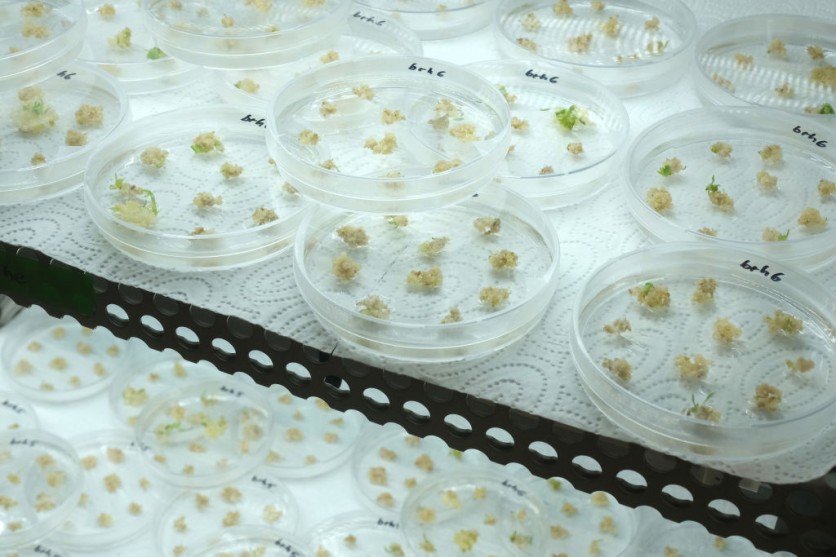A new artificial intelligence program may just be the driving force behind the first simple production of modifiable proteins called zinc fingers that would treat diseases by switching genes on and off.
The technique, which was developed by scientists from the University of Toronto and NYU Grossman School of Medicine, seeks to accelerate the widespread development of gene therapies.

(Photo : Sean Gallup/Getty Images)
GATERSLEBEN, GERMANY - APRIL 22: Petri dishes containing sprouting barley embryos that have received spliced genetic material derived through the CRISPR-Cas9 editing process lie on shelves under light at the Leibnitz Institute of Plant Genetics and Crop Plant Research (IPK) on April 22, 2021 in Gatersleben, Germany.
Zinc-Finger Editing
Diseases including cystic fibrosis, Tay-Sachs disease, and sickle cell anemia are caused by errors in the sequence of DNA letters that carry the instructions for human cells. But in some cases, scientists can correct these mistakes by rearranging these letters using gene editing techniques.
Instead of a problem with the coding itself, other illnesses are brought on by problems with how the cellular machinery interprets DNA, which is called epigenetics.
A gene that instructs the cell to produce a certain protein frequently collaborates with additional molecules known as transcription factors to instruct the cell on the amount of that protein needed to be produced.
When this mechanism fails, overactive or underactive genes contribute to neurological disorders, cancer, and diabetes. Hence, researchers have begun examining strategies on how to restore normal epigenetic activity.
One technique that can modify and regulate genes is zinc-finger editing. Zinc fingers are one of the most prevalent protein structure types in the body. They direct DNA repair by capturing enzymes and instructing them to remove the incorrect code segments.
The new tool, called ZFDesign, circumvents this problem by using AI to model and build these interactions. The screen of over 50 billion potential zinc finger-DNA interactions in the researchers' labs produced the data used to build the model.
"Our program can identify the right grouping of zinc fingers for any modification, making this type of gene editing faster than ever before," study lead author David Ichikawa, said in a press release statement.
Read Also : CES 2023: This AI-Powered Hummingbird Feeder Captures Images of Bird Visitors, Identifies 350 Species
Safer Alternative to CRISPR
Ichikawa points out that zinc-finger editing presents a perhaps safer alternative to CRISPR - a gene-editing technology with uses ranging from developing novel strategies to eradicate cancer cells to creating more nutrient-dense crops. It also interacts with genetic code using proteins from bacteria.
These "foreign" proteins can set off a patient's immune system, which could then battle them like any other infection and cause harmful inflammation.
The authors of the study suggest that, in addition to posing a lesser immunological risk, the smaller size of zinc-finger tools may offer more versatile gene therapy procedures than CRISPR by opening up additional options for delivering the tools to patients' appropriate cells.
The team's next step will be to improve its AI algorithm so that it can create more accurate zinc-finger groupings that only trigger the intended modification.
The findings of the study were published in the journal Nature Biotechnology.
Related Article : Scientist Behind CRISPR Babies is Back and Will Now Venture into Gene Therapy - Will He Gene-Edit Babies Again?

ⓒ 2026 TECHTIMES.com All rights reserved. Do not reproduce without permission.




